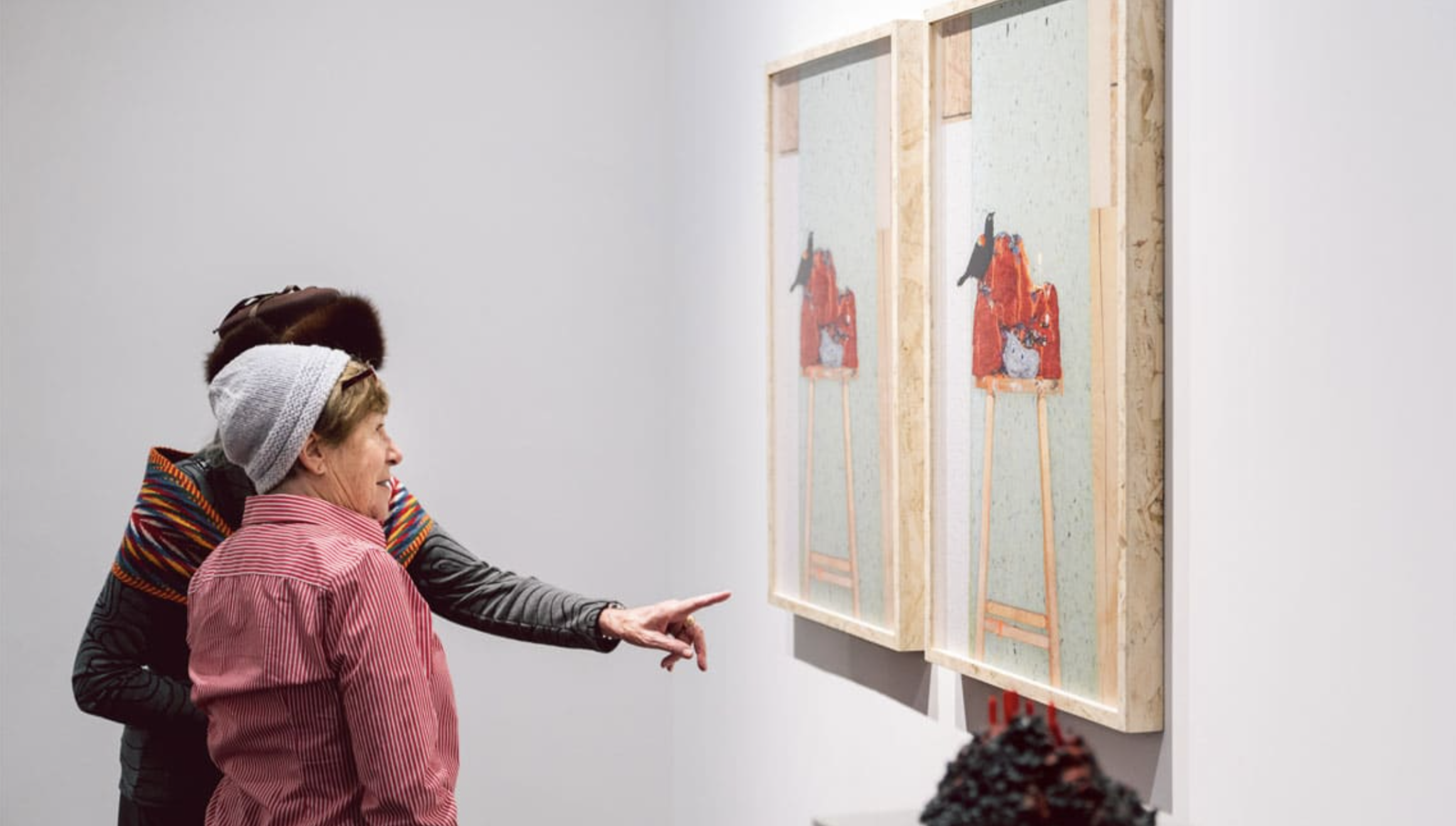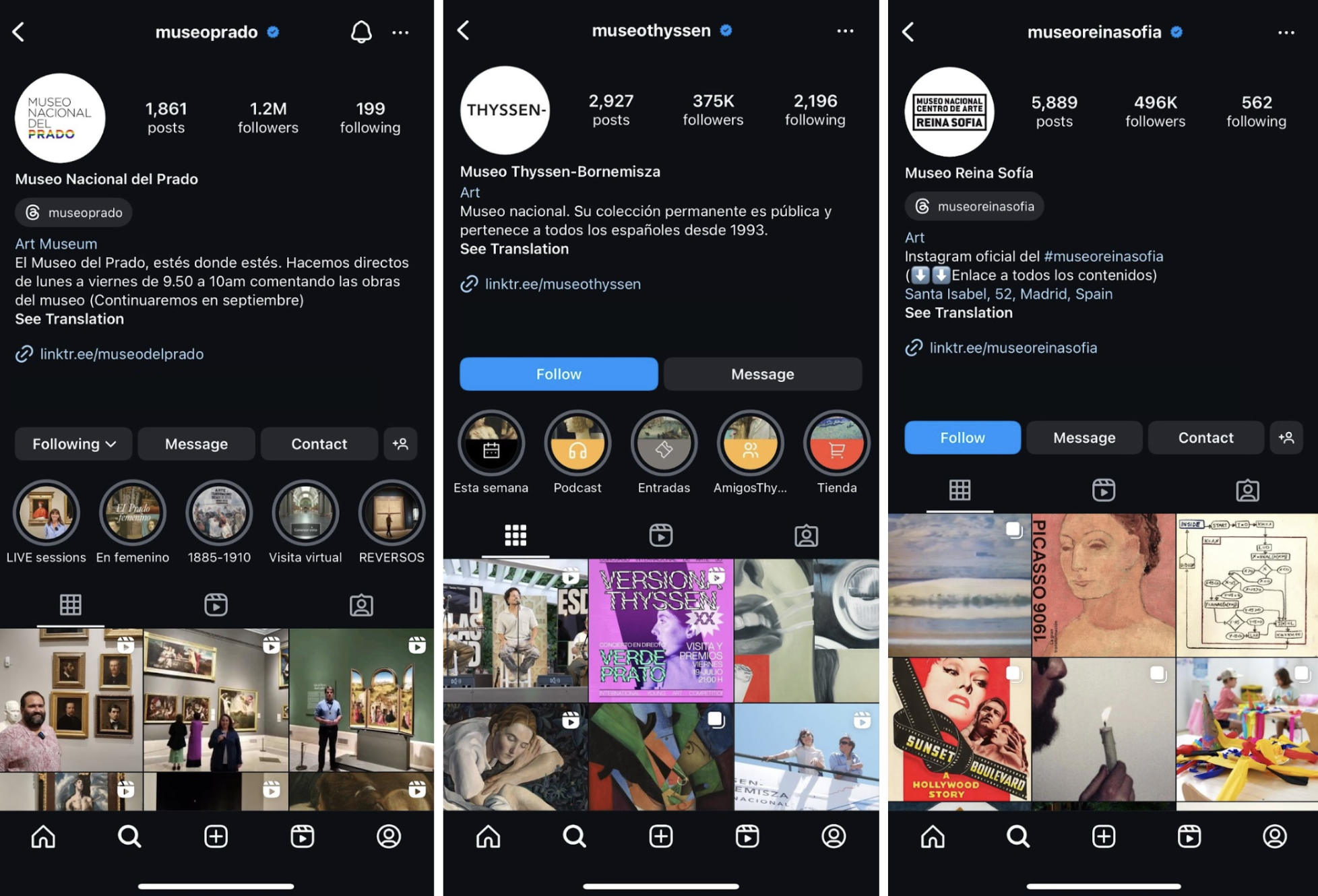Why is there an audience that does not visit museums?
According to a survey conducted by El Prado, 60% of Spaniards claim they have not visited a museum in the past year. However, 87.13% say they would like to go more often. So, what is creating this gap?
The public, for the most part, holds a favorable opinion of museums. Overall, it is concluded that these spaces are important and necessary institutions for society, where a fundamental part of a country’s artistic and cultural heritage is preserved and displayed. Which is true. On paper, people like museums. So, why does this opinion not translate into action?
- The spiral of silence and other theories
- Availability and use of free time
- Lack of understanding and rejection of audioguides
- A potential solution: The guide
- What can museums do?
The spiral of silence and other theories
We take for granted that people who do not attend museums must want to, thanks to their beneficial nature. However, according to Enrique Varea Agüí, director of the Sorolla Museum, there is a percentage of people who claim they want to go but are actually hiding a negative opinion about museums. He explains that in psychology, this is known as the "Spiral of Silence," a theory developed by German political scientist Elisabeth Noelle-Neumann in the late 1970s. This theory explains that because one group (40% of the public who do visit museums) has formed and expressed a positive and socially acceptable opinion, the other group (the 60% who do not attend) feels compelled to remain silent and conform.
In 2012, the Permanent Museum Public Laboratory conducted focus groups to uncover the real opinions non-visitors had about museums. Participants gave a variety of responses. The study states:
"The word 'museum' is mainly associated with art: paintings, sculptures..."
"At a second level, museums suggest concepts considered serious and scholarly: culture, history, knowledge..."
"But, at a third level, once the canonical attributes and stereotypes have been cited, inconveniences appear, especially and repeatedly: boredom, fatigue, density, and closed environments."
Thus, we can understand that many of these “non-visitors” have strong opinions about museums that they do not necessarily express openly.
Availability and use of free time
"I have very little free time, from Monday to Friday until six o'clock I’m extremely busy. Saturdays I devote to house chores, and Sunday is the only day I have to walk around, go to the movies..." (woman, Madrid)
Lack of time is the most frequently mentioned reason among participants in the Prado survey. According to 39.96% of participants, the lack of time is the most relevant reason why they do not visit museums.
Many participants stated they do not plan their leisure activities and prefer to "see what comes up," which often translates into an unconscious routine without changes unless an external factor pushes for it.
"I basically always do the same thing." (woman, Madrid)
Not visiting a museum often may not be a conscious decision.
Lack of understanding and rejection of audioguides
"You have to know how to understand, because there are museums about culture, others about paintings... to appreciate a museum like that you need a certain ability; otherwise you just drift off." (man, Barcelona)
The image of museums as an "ivory tower" or institutions that only certain types of people can access acts as a mental barrier for non-visitors. It is a well-known stereotype: museums are either boring, hard to understand, or both. The belief that you must be an educated or cultured person to enjoy a museum creates a limitation and a vicious circle that generates even more misunderstanding and rejection among non-visitors.

A potential solution: The guide
"Information is important, but I stand in front of a painting, and I don't know how to interpret it. But if there were a guide who gathered a group of 20 people and explained things to you... (…) If you go to the Prado and look at The Family of Charles IV, and there's someone explaining that the queen is further to the left because Goya didn’t like her... That's interesting." (man, Madrid)
However, among non-visitors, there is widespread rejection of audioguides, mostly because they do not enhance or encourage social interaction:
_Participant 1: Now there are more sophisticated methods, like using a little device... it tells you things... and it bores me.
Participant 2: It’s a monotonous voice...
Participant 3: They should set the scene for you, like the painter's context...
Participant 4: It’s colder, even though it tells you information. You isolate yourself with the headphones.
Participant 5: And if you have the headphones on, you can't talk to your spouse, your children...
Participant 1: And you can't ask questions.
Participant 6: And doubts arise. _(Seville)
An interesting point for cultural mediators and museum directors: non-visitors feel that museums do not allow them to connect with others; they seek to give visits a new social meaning.
What can museums do?
It would be incoherent to recommend that museums turn into a kind of social spectacle, as this would largely go against the nature of what a museum is. However, museums should take actions to become closer to their potential audience. There are many examples of museums that have leveraged social media with digital strategies to reach audiences they previously lacked.

Today, more than ever, museums need visibility. Embracing today's reality would not be a betrayal but rather a favor to themselves. It is crucial to understand the needs of both users and non-users in order to transform into holistic institutions capable of reaching and influencing any audience.
Museums must be able to achieve something very difficult: create an emotional connection with the public (this often can mean becoming a recognizable brand, organizing activities outside the museum, or reaching out to where the public is). It’s clear that if we have an emotional bond or prior knowledge about something, we feel much more affected by it:
_"I went to the Anne Frank Museum and was extremely moved because I had read the book... I was really emotional, I got goosebumps, and I didn’t cry by sheer miracle. I loved it. At the same time, I also visited the Van Gogh Museum, but... it didn’t move me much. I don’t know much about painting... the paintings are famous, but that’s it." _(woman, Seville)
The future of museums should focus on creating cultural communities that prioritize dialogue between the museum and its visitors. It is essential to know and care for the audience, offering valuable experiences both for users and non-users, while always preserving the essence of the museum. This way, museums can evolve without losing their identity.
BIBLIOGRAPHY
Ministry of Education, Culture and Sports (2012). Getting to Know All Audiences: What Images Are Associated with Museums? Secretaría General Técnica, Subdirección General de
Documentación y Publicaciones. NIPO: 030-12-330-1.
https://www.traveler.es/viajes-urbanos/articulos/por-que-no-me-gusta-ir-a-museos-estudio-prado/14839 [Consulted on July 12, 2024].
Ministry of Culture and Sports (n.d.). Museum: A Place Where I Don’t Go. [online] Available at: https://www.cultura.gob.es/dam/jcr:76fdbdd1-ee8a-40fc-b083-4d9a62ef6cf5/museo-lugar-donde-no-voy.pdf [Consulted on July 12, 2024].